#ras tafari makonnen
Explore tagged Tumblr posts
Text
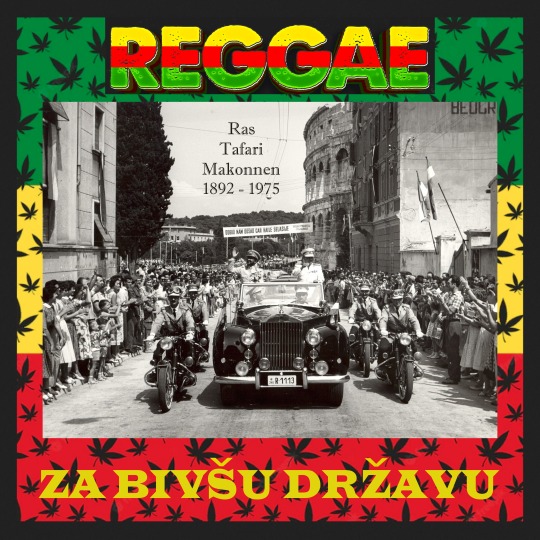
Slušam...
#reggae za bivsu drzavu#butleg kompilacija#jugoslavija#josip broz tito#haile selassie#ras tafari makonnen#reggae music
1 note
·
View note
Text
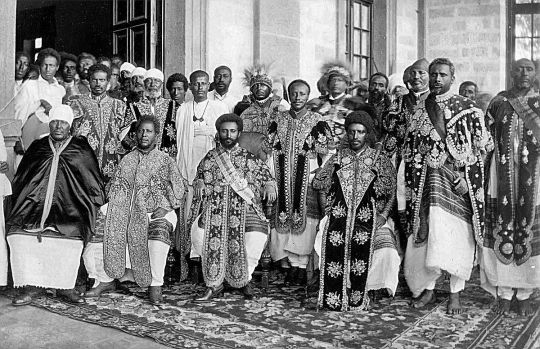
The term "Rastafari" derives from "Ras Tafari Makonnen", the pre-regnal title of Haile Selassie, the former Ethiopian emperor who occupies a central role in Rasta belief. The term "Ras" means a duke or prince in the Ethiopian Semitic languages; "Tafari Makonnen" was Selassie's personal name. It is unknown why the early Rastas adopted this form of Haile Selassie's name as the basis of the term for their religion. As well as being the religion's name, "Rastafari" is also used for the religion's practitioners themselves. Many commentators—including some academic sources and some practitioners—refer to the movement as "Rastafarianism". However, the term is disparaged by many Rastafari, who believe that the use of -ism implies religious doctrine and institutional organisation, things they wish to avoid.

Ras (Amharic: ራስ, romanized: ras, lit. 'head' compare with Arabic Rais or Hebrew Rosh), is a royal title in the Ethiopian Semitic languages. It is one of the powerful non-imperial titles.
Historian Harold G. Marcus equates the Ras title to a duke;[citation needed] others have compared it to "prince".
The combined title of Leul Ras (Amharic: ልዑል ራስ) was given to the heads of the cadet branches of the Imperial dynasty, such as the Princes of Gojjam, Tigray, Ras Tafari Makonnen and the Selalle sub-branch of the last reigning Shewan Branch, and meaning "Lord of Lords", the highest title of lord.

#ras#african#afrakan#kemetic dreams#brownskin#africans#afrakans#brown skin#african culture#afrakan spirituality#makonnen#tigray#ras tafari#rastafari#harold g marcus#leul ras#lord of lords#Tafari Makonnen#haile selassie#ethiopia#ta netjer#amharic
190 notes
·
View notes
Text

#HERstory Zewditu (Ge'ez: ዘውዲቱ, born Askala Maryam; 29 April 1876 – 2 April 1930) was Empress of Ethiopia from 1916 to 1930.
The first female head of an internationally recognized country in Africa in the 19th and 20th centuries, and the first and only empress regnant of the Ethiopian Empire, her reign was noted for the reforms of her Regent and designated heir Ras Tafari Makonnen (who succeeded her as Emperor Haile Selassie I), about which she was at best ambivalent and often stridently opposed, due to her staunch conservatism and strong religious devotion. She is the most recent empress regnant, as well as the last female Ethiopian head of state until the 2018 election. Via Wikipedia
#Zewditu #AskalaMaryam #Empress #Ethiopia #PalianShow #africanherstory #ethiopianwomen #lastfemale #womeninpower #EthiopianEmpire
6 notes
·
View notes
Text

Foto de 1924 del dictador italiano Benito Mussolini en una recepción para Ras Tafari Makonnen, regente plenipotenciario de Etiopía, que sería coronado emperador Haile Selassie en 1930. Una década después de esta reunión, Mussolini invadiría Etiopía, obligando a Selassie a exiliarse.
2 notes
·
View notes
Text
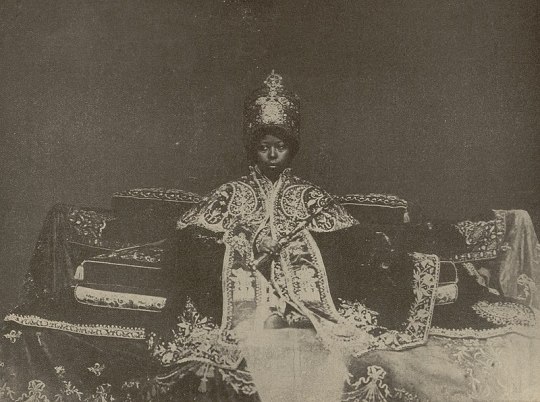
Zewditu (Askala Maryam; 29 April 1876 – 2 April 1930) was Empress of Ethiopia from 1916 to 1930. The first female head of an internationally recognized country in Africa in the 19th and 20th centuries, and the first and only empress regnant of the Ethiopian Empire, her reign was noted for the reforms of her Regent and designated heir Ras Tafari Makonnen (who succeeded her as Emperor Haile Selassie I), about which she was at best ambivalent and often stridently opposed, due to her staunch conservatism and strong religious devotion. She is the most recent empress regnant, as well as the last female Ethiopian head of state until the 2018 election of Sahle-Work Zewde as president.
#Zewditu of Ethiopia#Askala Maryam#women in history#african history#ethiopian history#Empire of Ethiopia#xix century#xx century#people#portrait#photo#photography#black and white
3 notes
·
View notes
Photo
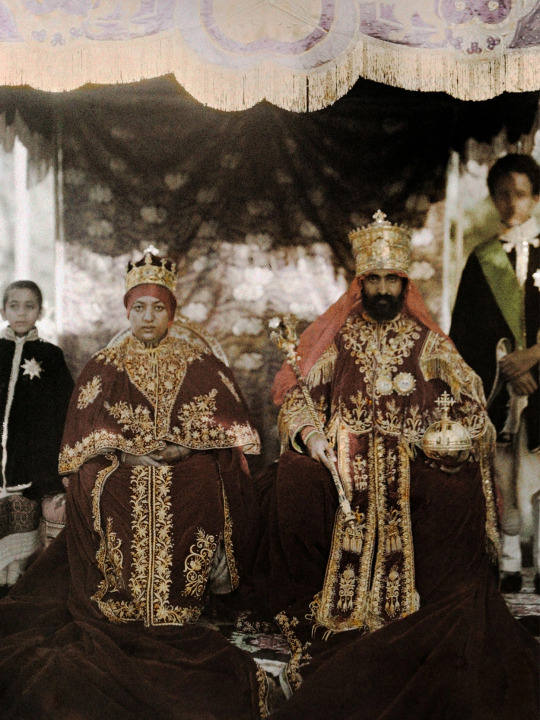
o imperador da etiópia haile selassie i e sua esposa, a imperatriz menen asfaw. o nome de registro de haile selassie era ras tafari makonnen, e sua ascensão ao trono fez com que muitos jamaicanos acreditassem que ele havia cumprido uma profecia bíblica, marcando o início da fé rastafári. foto de w. robert moore.
10 notes
·
View notes
Audio
(Motif-Radio) Reggae Pon Top Show # 01 2025, track listing below:
SINGLES: KING UBBYS VERSION LUTAN FYAH- BETTER WAY QUEEN OMEGA, CHEZIDEK, U-BROWN- THREE THE HARD WAY RAS FRASER JR. & NATTY KING- DISAGREE CARL MEEKES- GANJA BABY MACKA B- STILL LOOK GOOD WILLZ- MY EVERYTHING CLAYE- MONEY CAN'T BUY EESAH, NATURE MAKONNEN- JUSTICE COOKIE THE HERBALIST & H.O.R.- BREAK FREE KUMAR MEETS THE 18TH PARALLEL- WORLD WIDE LOVE RICHIE DAVIS- MY SWEET LORD
RIDDIMS: WORD SOUND & POWER RIDDIM HARVEST LIFE RIDDIM FREE JAH JAH CHILDREN
DANCEHALL: QUAK QUAK RIDDIM IWAATA- HARMONY GENIUSMINTOL- PARTY SESSION KATACHAFIRE- SERIOUSLY BIG INFLUENCER RIDDIM YAKSTA- CEASE FIRE BRI LYPHE- PRAYER OF IMPERFECTION HILLA BUN DEM & ECHO SLIM- INNA MI LIFE GULLISTAR- STARIGHT UP GYPTIAN- CALLIN 450 & WEEKDAY- UPSIDE DOWN JAMAL- TRANSPARENT
ROOTS/ONE DROP/LOVER'S ROCK: NIA NEIL- BROWN SKIN KING IZEM- PAIN MORTIMER- NOT A DAY GOES BY IMERU TAFARI- BLACK HEART MAN JAH LIL- AT HOME KING OF KINGS RIDDIM YABBA U- GIVE THANKS & PRAISE FABIAN MIRANDA- DESTINY HORACE ANDY- AIN'T NO SUNSHINE WHEN SHE'S GONE DELTON SCREECHY- LIVING IN THE GHETTO DENNIS BROWN- HAVE NO FEAR NAGGO MORRIS- A TRUE DEM NUH KNOW
0 notes
Text

Dejazmach Balcha Safo (1863 – November 6, 1936) popularly referred to by his horse name Abba Nefso, was an Ethiopian military commander and lord protector of the crown, who served in both the First and Second Italo-Ethiopian Wars.
He was one of many Agemja prisoners of war during Ethiopian Emperor Menelik II’s expansions south between 1875 and 1889. He came to the notice of Emperor Menelik II, who brought him back to Addis Ababa where he was educated. He made his reputation, according to oral tradition, in the Battle of Mek’ele and at the Battle of Adwa and was rewarded with elevation to the aristocratic status of dejazmach. He was appointed a provincial Governor. He was a key member of the conservative provincial elite who, in the 1920s, were often at odds with the modernizing reforms and rising power of the Regent, Ras Tafari Makonnen. Tafari Makonnen would force him into retirement, albeit an honorable one, in 1928, from which he would emerge in 1935 to fight against the Fascist invasion, resulting in his death. #africanhistory365 #africanexcellence
1 note
·
View note
Photo
Haile Selassie
Former Emperor of Ethiopia
Imperial standard of Haile Selassie I Haile Selassie I was Emperor of Ethiopia from 1930 to 1974. He rose to power as Regent Plenipotentiary of Ethiopia for Empress Zewditu from 1916.
Born: July 23, 1892, Ejersa Goro, Ethiopia
Died: August 27, 1975, National Palace, Addis Ababa
Children: Prince Makonnen, Amha Selassie, MORE
Grandchildren: Ermias Sahle Selassie, Sophia Desta, Aida Desta
Spouse: Menen Asfaw (m. 1911–1962)
Full name: Ras Tafari Makonnen
Awards: Order of the Star of Romania, Order of the White Eagle


“Democracy, Republic: What do these words signify? What have they changed in the world? Have men become better, more loyal, kinder? Are the people happier? All goes on as before, as always. Illusions, illusions.”
- Haile Selassie (1892-1975)
798 notes
·
View notes
Text

😏 😖 em 1924, o príncipe Ras Tafari Makonnen foi coroado 225º Imperador da Etiópia, alegando ser descendente direto do rei Davi bíblico. das ideias de Garvey, pessoas começaram a crer que o imperador vinha para acabar com a dominação europeia e acabar com o sofrimento africano.
Mais tarde, o imperador adotaria o nome de Haile Selassie I (que significa "poder da santíssima trindade", além de adotar o título de "Sua Majestade Imperial, Rei dos Reis, Senhor dos Senhores, o Leão Conquistador da Tribo de Judá, Eleito de Deus") e passaria a ser venerado como um deus vivo, encarnando a esperança na redenção africana. Os adoradores de Selassie ficaram conhecidos como "ras tafaris" ou "rastafarians", que, mais tarde, evoluíram para "rastamen" e "rastas".
A popularização do movimento rastafári O imperador Haile Selassie I, que foi considerado deus na terra. (Fonte: GettyImages)© Fornecido por Mega Curioso Ou seja, o rastafarianismo foi se estabelecendo por raízes complexas que misturavam religião, filosofia e política. Com o tempo, foi incorporando cada vez mais os desafios que acompanhavam a realidade dos jamaicanos. Conseguia, assim, adesão entre os mais pobres, justamente os que necessitavam da esperança de dias melhores.
Aos poucos, o rastafarianismo foi evoluindo para uma filosofia mais abrangente que envolvia ideias e princípios. A adesão dos intelectuais, a rejeição da "visão de mundo Rastafári" pelas autoridades coloniais e a invasão da Etiópia em 1934 fizeram com que o movimento fosse encontrando cada vez mais simpatizantes. Os adeptos questionavam as normas religiosas eurocêntricas impostas pelos colonizadores e se interessavam de forma crescente pela sua herança cultural negra. Com o apoio de líderes intelectuais, como Leonard Howell, os conceitos do rastafarianismo se tornavam mais tangíveis e compartilháveis, aumentando a quantidade de discussões e debates sobre as escrituras, tornando a religião – que possui uma cosmovisão judaico-cristã profundamente afrocêntrica e anticolonial – cada vez mais difundida.
A fama de Bob Marley ajudou nessa popularização, pois suas músicas faziam essa visão circular pelo mundo todo. Basta prestar atenção na letra de músicas como “Redemption Song” ou “Them Belly Full but we Hungry”. Tudo isso tem feito com que a filosofia Rastáfari — que defende a espiritualidade, a identidade e a justiça social — siga viva na era atual, e sempre encontrando devotos que se apoiam nesses valores.
0 notes
Text
Haile Selassie - Wikipedia
Haile Selassie I (Ge'ez: ቀዳማዊ ኀይለ ሥላሴ, romanized: Qädamawi Haylä Səllasé,[nb 2] born Lij Tafari Makonnen; 23 July 1892 – 27 August 1975)[3] was the Emperor of Ethiopia from 1930 to 1974. He rose to power as Regent Plenipotentiary of Ethiopia (Enderase) for Empress Zewditu from 1916 until 1930. Haile Selassie is widely considered a defining figure in modern Ethiopian history, and the major figure of Rastafari, a religious movement in Jamaica that emerged shortly after he became emperor in the 1930s. Before he rose to power he defeated Ras Gugsa Welle Bitul (nephew of Empress Taytu) of Begemder at the Battle of Anchem in 1928.[4][5] He was a member of the Solomonic dynasty, which claims to trace lineage to the Emperor Menelik I, a legendary figure believed by the claimants to be the son of King Solomon and the Queen of Sheba, who they name as Makeda.
SAMYAZA
0 notes
Text
Fifth Degree™ Haile Selassie I Jah Ras Lij Tafari Makonnen T Shirt Ethiopia His Imperial Majesty Elect of God Rasta Clothing Reggae Outfits
You’ve now found the staple t-shirt of your wardrobe. It’s made of 100% ring-spun cotton and is soft and comfy. The double stitching on the neckline and sleeves add more durability to what is sure to be a favorite! • 100% ring-spun cotton • Sport Grey is 90% ring-spun cotton, 10% polyester • Dark Heather is 65% polyester, 35% cotton • 4.5 oz/yd² (153 g/m²) • Shoulder-to-shoulder taping •…

View On WordPress
Rasta Clothes For Woman
Rastafarian Clothing
Rasta Music
0 notes
Text
23 July
In 776 BC, the first Olympic Games opened in Olympia. The foot race was won by Coroibos, a cook.
10 weird and wonderful things which happened on 23 July:
0 notes
Text
Ligações curiosas: da Etiópia aos rastafáris
A compartimentalização do conhecimento em disciplinas é uma arbitrariedade humana. É claro, fica mais fácil e mais didático ensinar separando o todo em partes menores. Descartes dizia algo como: “se o todo é difícil, comece pelas partes”. Mas, exatamente por ser arbitrário o critério dessa divisão, o principal risco é perder a visão do todo. Exemplo de como temas aparentemente desconexos podem possuir uma profunda relação é a história a seguir.
O que teriam em comum rastafáris dançando reggae e a Rainha de Sabá, da longínqua Etiópia?
O Torá, a Bíblia e o Alcorão contam a história da Rainha de Sabá, ou Makeda, que supostamente teria vivido em local que hoje corresponde à região da Etiópia, ao redor do S��culo X aC. Segundo a tradição, Sabá teria viajado até o Reino Israel, para conhecer o Rei Salomão. Para alguns, tal encontro teria produzido uma descendência, dando origem a uma linhagem, a qual seria a origem dos monarcas etíopes.

Na lista dos monarcas descentes dessa linhagem, está Tafari Makonnen, nascido em 1892 e tornado imperador em 1930, ocasião em que mudou seu nome para Hailê Selassiê (que significa “O Poder da Divina Trinidade”). Orador notável, Selassiê trouxe grande projeção internacional ao seu país. Seu discurso na Liga das Nações, em 1936, sobre a invasão da Itália na Etiópia, é considerado um marco que inspirou o movimento negro em várias partes do mundo:
Enquanto a filosofia que declara uma raça superior e outra inferior não for finalmente e permanentemente desacreditada e abandonada, enquanto não deixarem de existir cidadãos de primeira e segunda categoria de qualquer nação, enquanto a cor da pele de uma pessoa for mais importante que a cor dos seus olhos, enquanto não forem garantidos a todos por igual os direitos humanos básicos, sem olhar a raças, até esse dia, os sonhos de paz duradoura, cidadania mundial e governo de uma moral internacional irão continuar a ser uma ilusão fugaz, a ser perseguida mas nunca alcançada.
Selassiê criou uma legião de seguidores graças ao seu carisma e aos seus ideais, passando a ser adorado quase como um deus. Seus seguidores chamavam-no, em amárico, de Ras (príncipe) Tafari (seu nome).
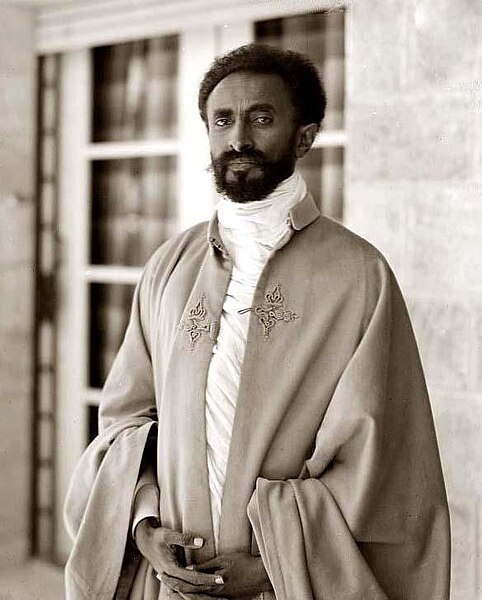
Hailê Selassiê, em foto tirada na década de 30
A fama de Selassiê se espalhou pelo mundo todo, com especial influência nas populações de afrodescendentes. Com o tempo, os seguidores passaram a ser chamados pelo nome do próprio líder, os rastafáris. Na Jamaica, a ideologia em torno dele deu origem a uma religião, conhecida como Rastafarismo. O jamaicano Bob Marley, nos anos 60 e 70, foi profundamente influenciado por Selassiê, a letra da música War foi inspirada no seu discurso de 1936.
http://youthvoices.net/sites/default/files/image/6514/feb/bob_marley_by_cheatingly.jpg
Em 1974, Selassiê foi deposto em um golpe de estado, morrendo no cárcere no ano seguinte, em condições até hoje não esclarecidas. Seu enterro se deu de forma simples, pois seus opositores não queriam grandes movimentações em torno do líder. Anos depois, em 2000, já com os golpistas fora do poder, o corpo de Selassiê foi localizado e exumado, para ser novamente enterrado com as devidas pompas, em um funeral da Igreja Ortodoxa Etíope. Bob Marley já havia morrido (faleceu em 1981), mas sua família esteve presente nessa cerimônia para prestar sua homenagem.
Há quem diga que Bob Marley é mais ouvido do que lido. Talvez haja um pouco de verdade, pois raros são os que conhecem os labirintos de sua curiosa ligação com a Etiópia. O improvável, porém, é sempre real. A história da Jamaica passa pela história da Etiópia, a qual passa pela história de Israel.
Ainda que Nietzsche afirme que não existe o fato, existe a versão, fica aqui o exemplo de como fragmentos, estudados separadamente, podem dar uma visão totalmente distorcida da verdade.
POR MAURICIO GARCIA
0 notes
Photo
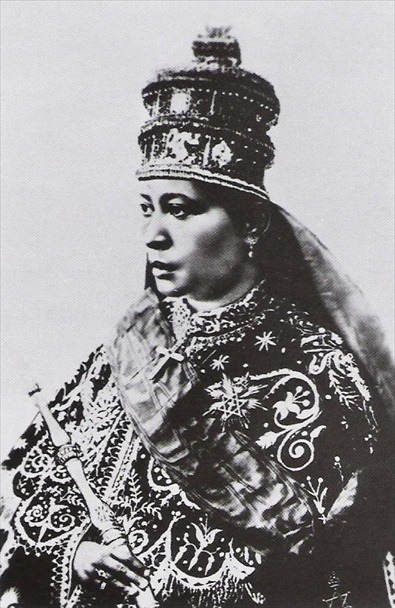





Empress Zewditu I of Ethiopia, 1916-1930
Zewditu (also spelled Zeoditu or Zawditu or Zauditu or Zäwditu; Ge'ez: ዘውዲቱ; born Askala Maryam; 29 April 1876 – 2 April 1930) was Empress of Ethiopia from 1916 to 1930. The first female head of an internationally recognized country in Africa in the 19th and 20th centuries, and the first empress regnant of the Ethiopian Empire, her reign was noted for the reforms of her Regent and designated heir Ras Tafari Makonnen (who succeeded her as Emperor Haile Selassie I), about which she was at best ambivalent and often stridently opposed, due to her staunch conservatism and strong religious devotion. As of 2020 she is the most recent empress regnant in history.
6. With one of her favored priests
432 notes
·
View notes
Text
Ras Makonnen Woldemikael and his son Lij Tafari Makonnen

2 notes
·
View notes